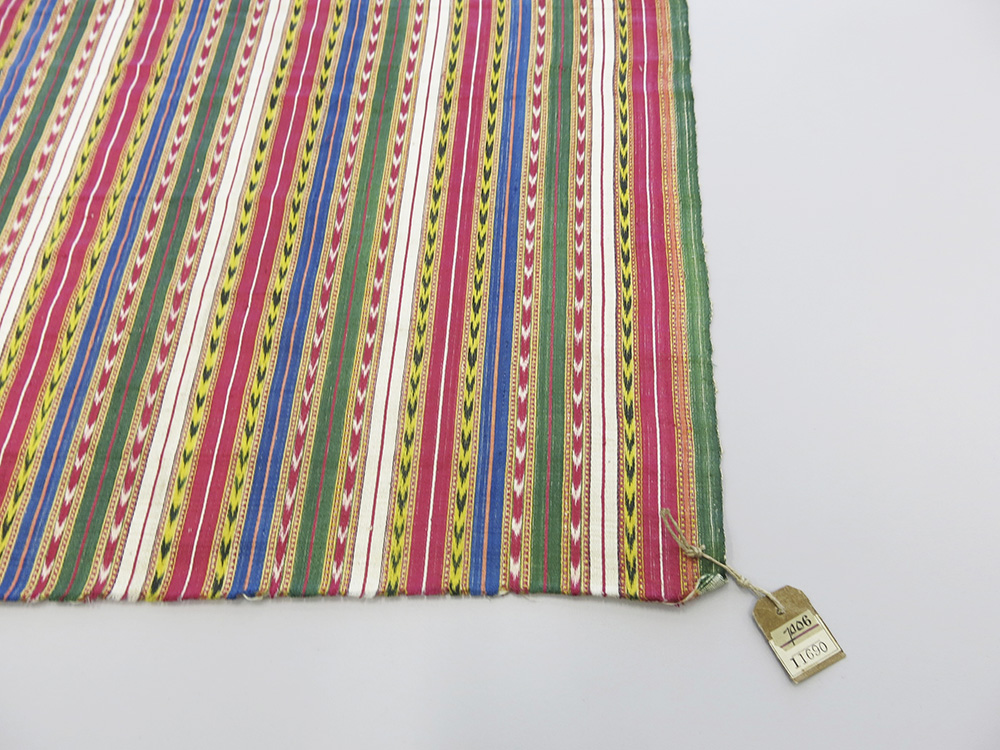Textile Conservation for V and A’s The Fabric of India Exhibition
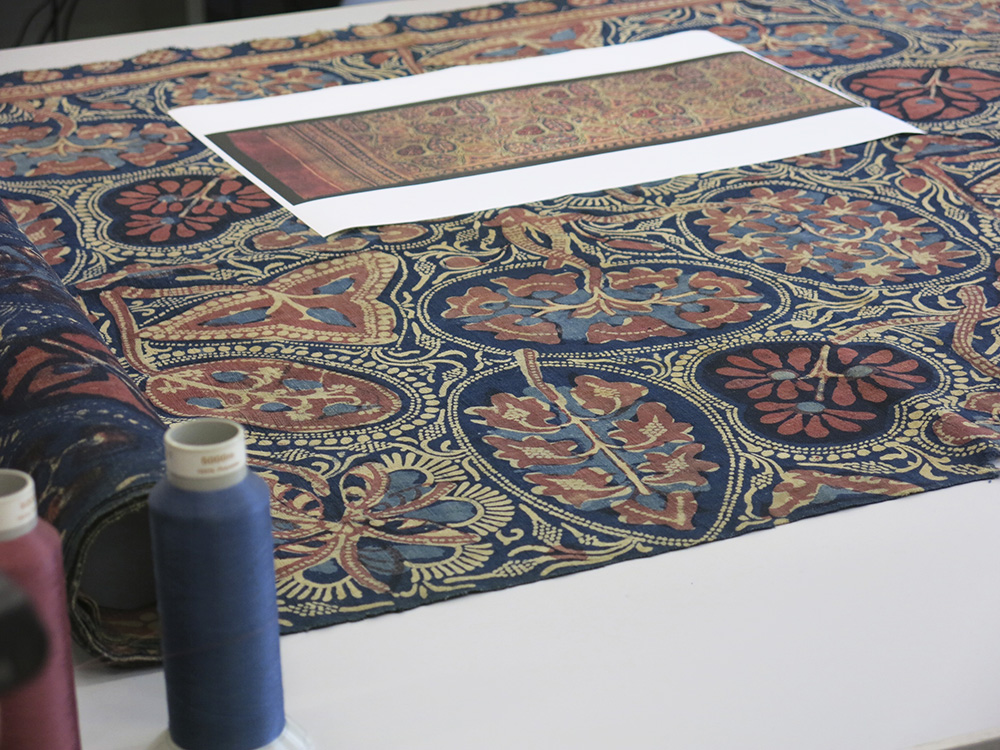
Billed as the highlight of the V&A’s India Season, The Fabric of India will be the first major exhibition to explore the dynamic and multifaceted world of handmade Indian textiles from the 3rd to the 21st century. The show will feature over 200 pieces including an 18th century tent, ceremonial and religious cloths, textiles created for export, historic costumes and contemporary Indian designs. The exhibition will demonstrate the skills, variety and adaptability of Indian textile makers and the enduring nature of the techniques for dyeing, weaving and embroidery across the subcontinent. It will also draw attention to the impact of mass production on handmade textiles.
Whilst the curator is usually credited for choosing what goes on show at an exhibition, rarely does the public get an idea of the amount of work that goes on behind the scenes to prepare the exhibits. Textile conservation is a highly specialist skill that demands many years of training. The UK’s main Textile Conservation Centre (now based at Glasgow University) is celebrating its 40th anniversary this year. Its founder, Karen Finch OBE, started out at the V&A. The V&A’s textile conservation department at Blythe House is staffed by fully trained experts. Most of them have studied fashion or textile design before undertaking a specialist conservation degree, followed by a 3 year apprenticeship in conservation. They work with specially dyed thread, historical texts and photographs for reference purposes to undertake their painstakingly detailed repairs.
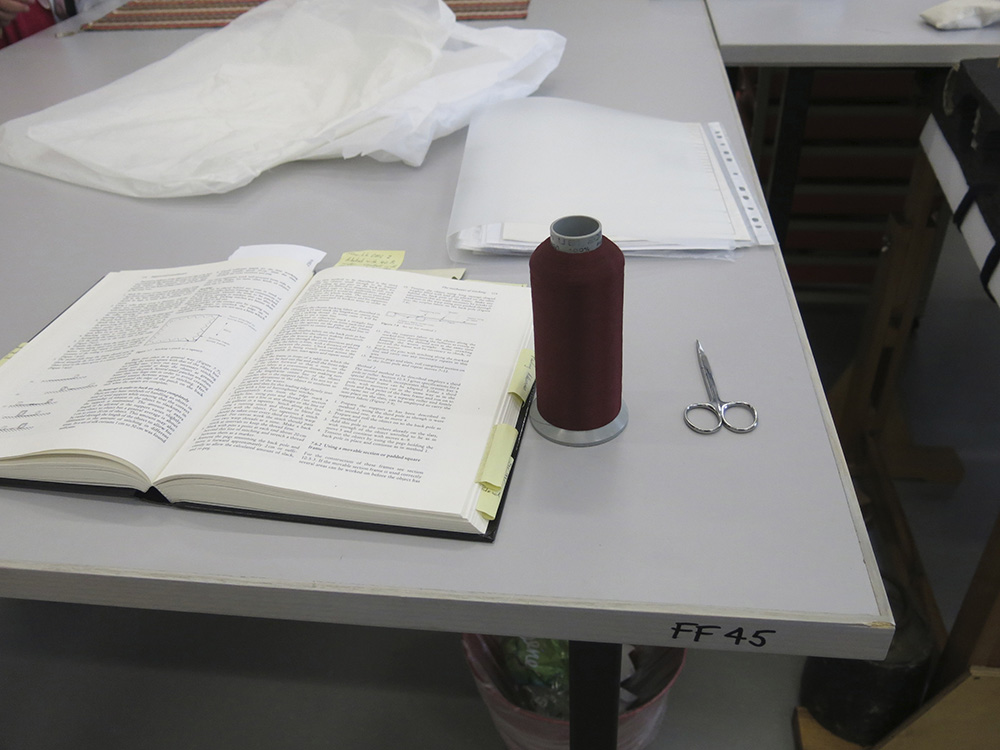
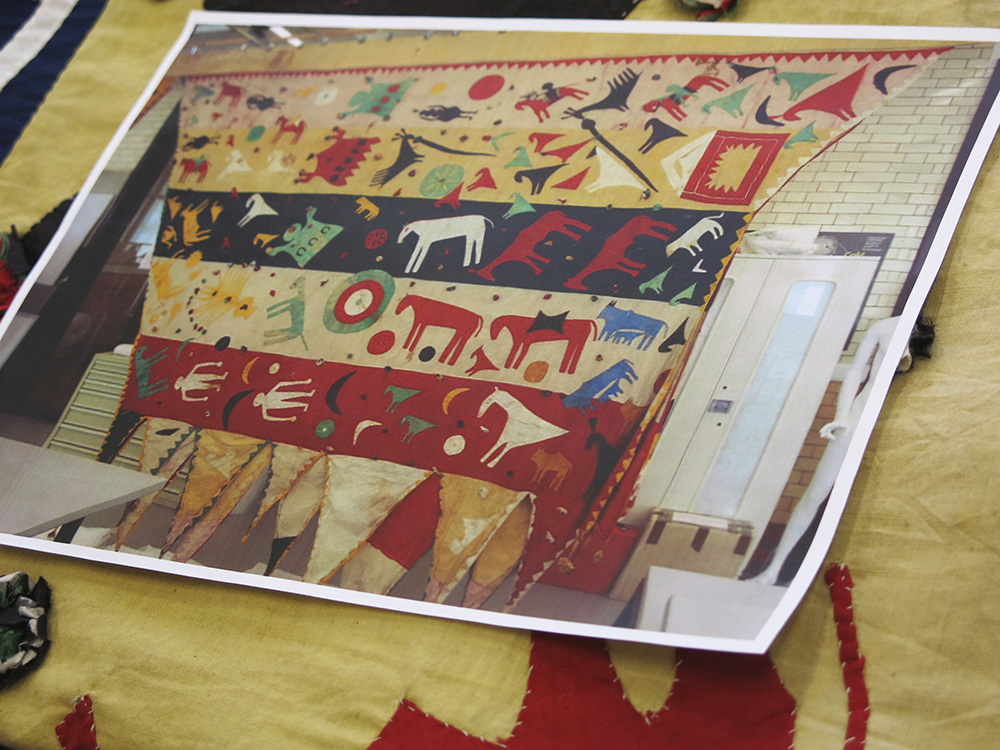
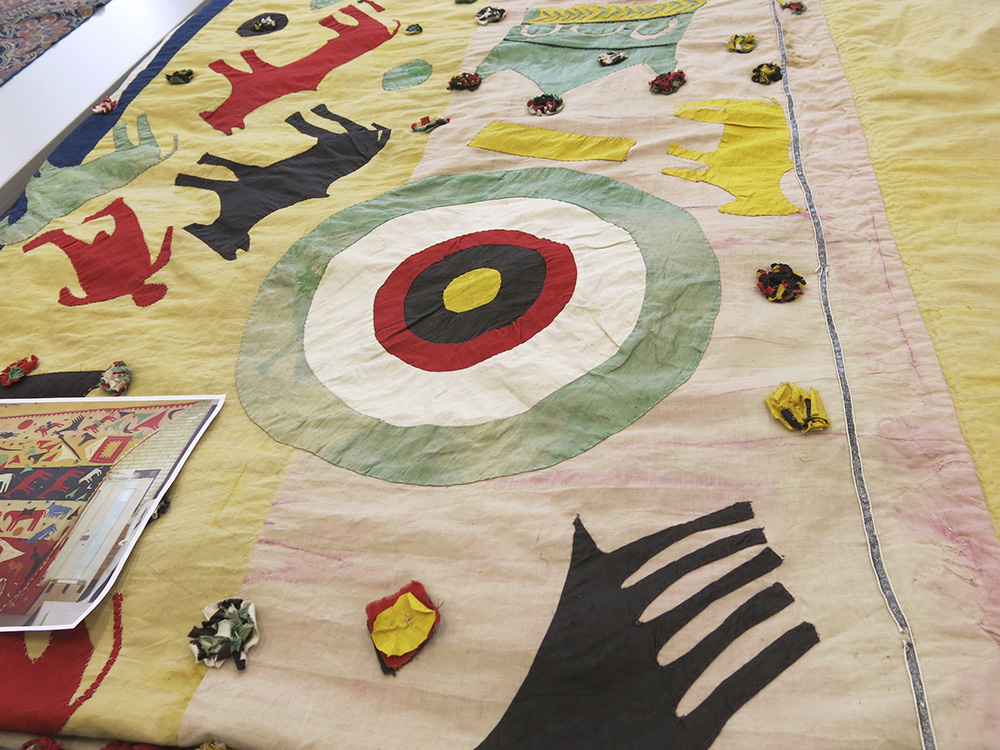 We took a behind the scenes look at some of the V&A’s textile conservators carrying out their meticulous work in advance of The Fabric of India show. One of the oldest textiles that will be featured in the exhibition is from the Gujarat region (as shown below), and has been dated (using radio carbon dating techniques) to 1340. The 5 metre piece of cloth is made of cotton and is block printed. Firstly, cosmetics sponges and vacuums are used to clean the textile as much as possible without causing any damage. In this instance, the conservator was required to apply blanket stitch around the edge of the fabric and carry out repairs to enable the blanket to be displayed in its entirety. With repairs that are patched, it is really important to get the colour of dye exactly right. Previous repairs are left in their existing state. The conservator has been working on the piece of cloth for five hours a day and anticipates the job will take a total of around 150 hours to complete.
We took a behind the scenes look at some of the V&A’s textile conservators carrying out their meticulous work in advance of The Fabric of India show. One of the oldest textiles that will be featured in the exhibition is from the Gujarat region (as shown below), and has been dated (using radio carbon dating techniques) to 1340. The 5 metre piece of cloth is made of cotton and is block printed. Firstly, cosmetics sponges and vacuums are used to clean the textile as much as possible without causing any damage. In this instance, the conservator was required to apply blanket stitch around the edge of the fabric and carry out repairs to enable the blanket to be displayed in its entirety. With repairs that are patched, it is really important to get the colour of dye exactly right. Previous repairs are left in their existing state. The conservator has been working on the piece of cloth for five hours a day and anticipates the job will take a total of around 150 hours to complete.
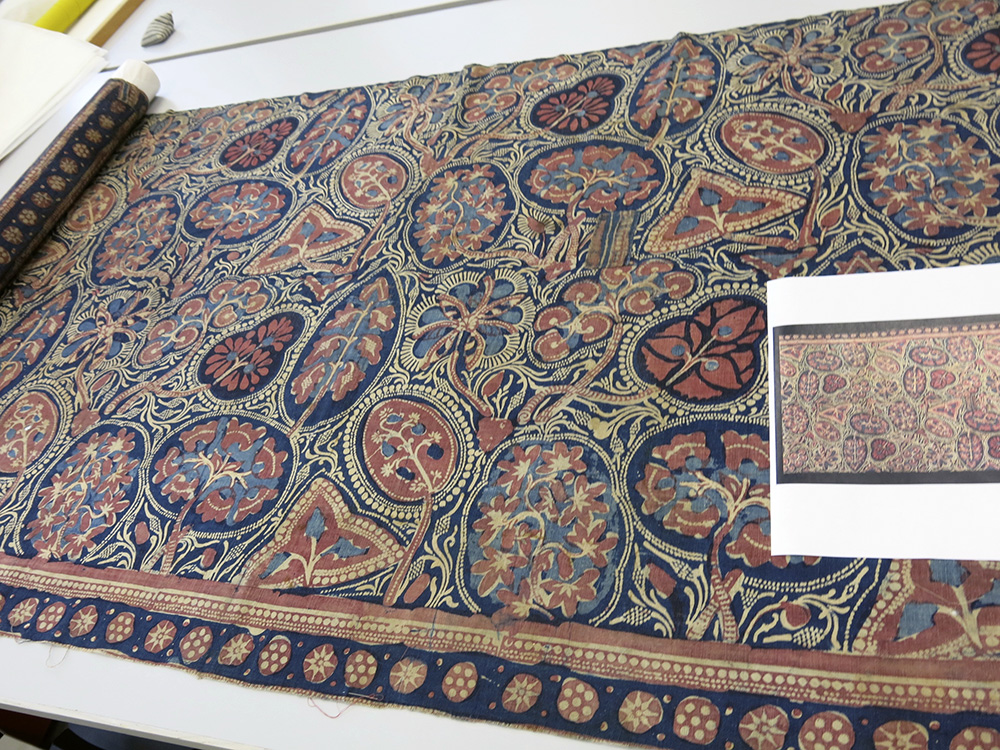
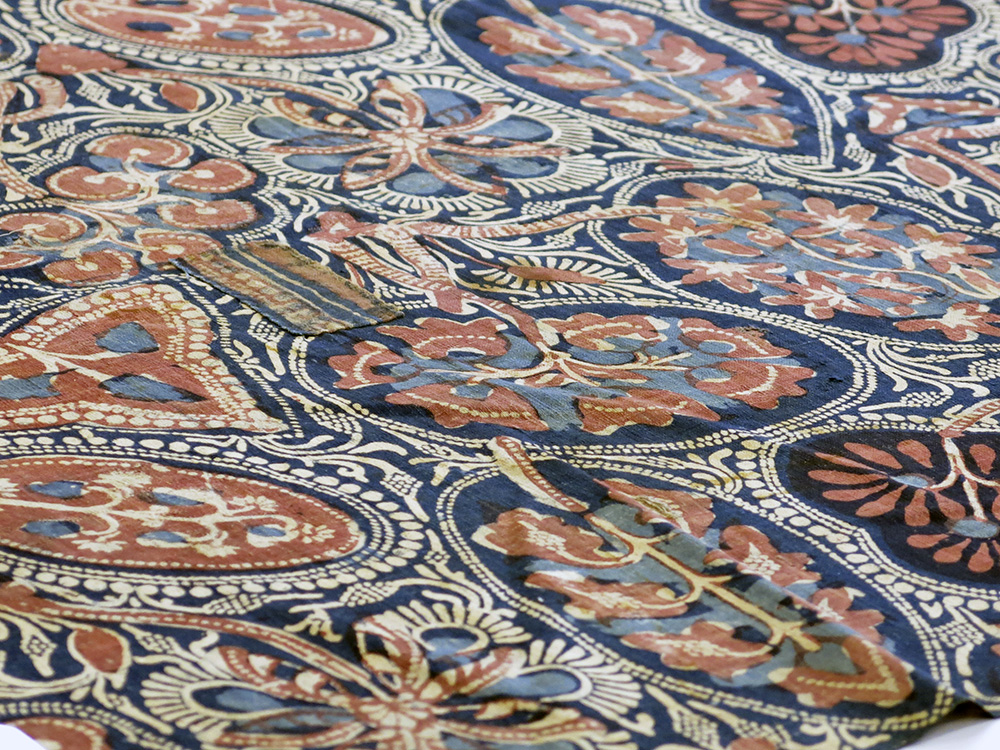 Another 5 metre long cloth from Gujarat is a ceremonial double ikat (this means the warp and weft are both dyed with an image on them and then woven together). The complex fabric, which dates from the 1900s, is made of silk. It is full of holes and is being given backing support. In this case, the conservator needed to work section by section, applying support and stitching. The work has been carried out in stages, with no attempt to replicate the pattern. The repairs will blend in, but will still be detectable (as can be seen below). Once the work is finished, the cloth “should be solid for the next 100 years.” The job will take around 300 hours including all preparation and dying of fabric.
Another 5 metre long cloth from Gujarat is a ceremonial double ikat (this means the warp and weft are both dyed with an image on them and then woven together). The complex fabric, which dates from the 1900s, is made of silk. It is full of holes and is being given backing support. In this case, the conservator needed to work section by section, applying support and stitching. The work has been carried out in stages, with no attempt to replicate the pattern. The repairs will blend in, but will still be detectable (as can be seen below). Once the work is finished, the cloth “should be solid for the next 100 years.” The job will take around 300 hours including all preparation and dying of fabric.
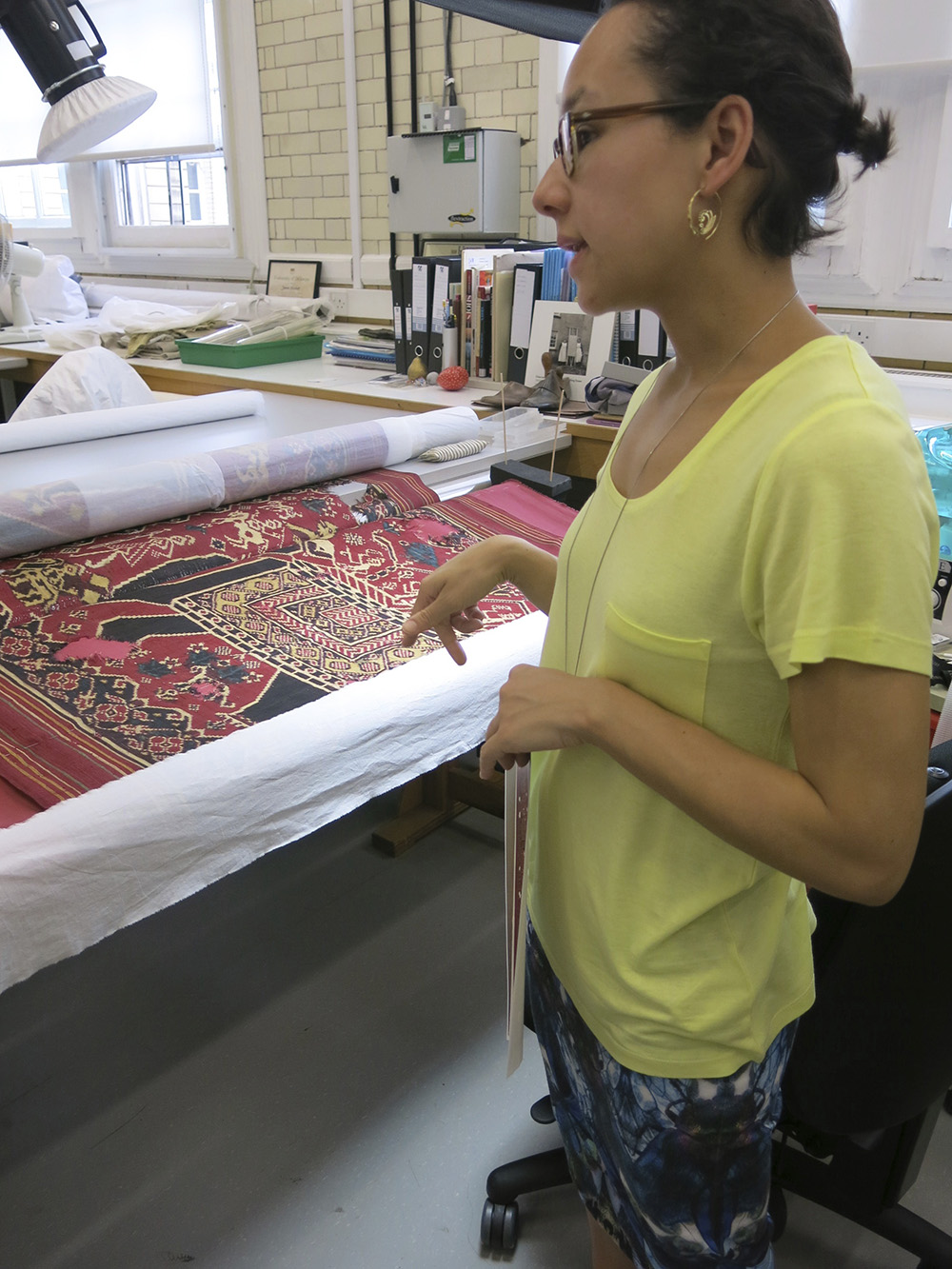
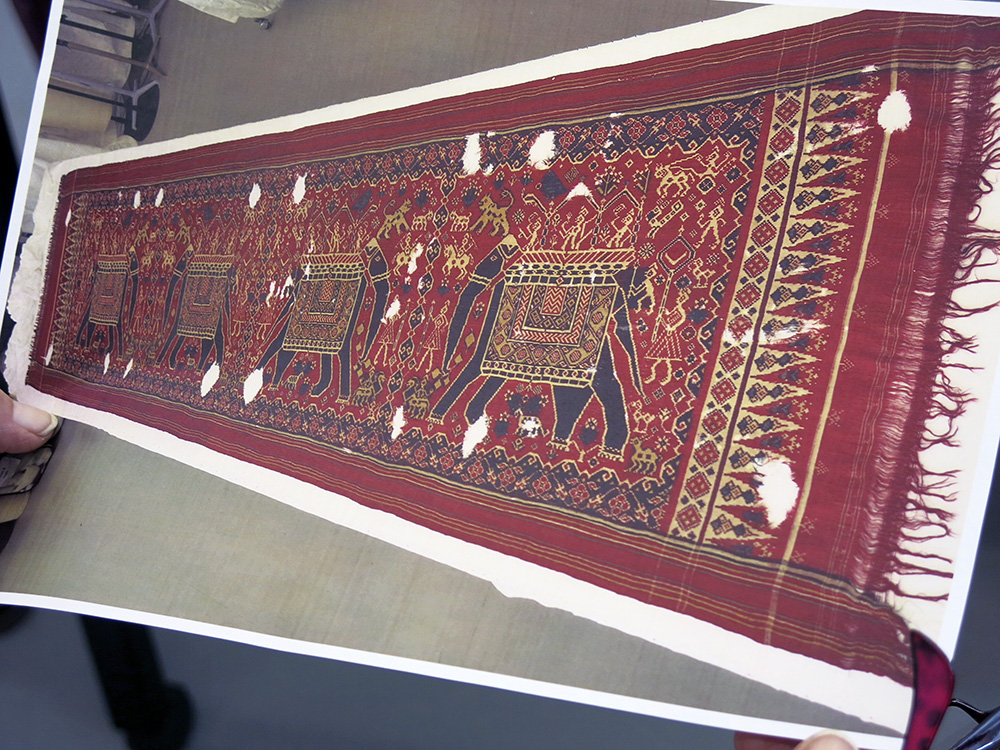
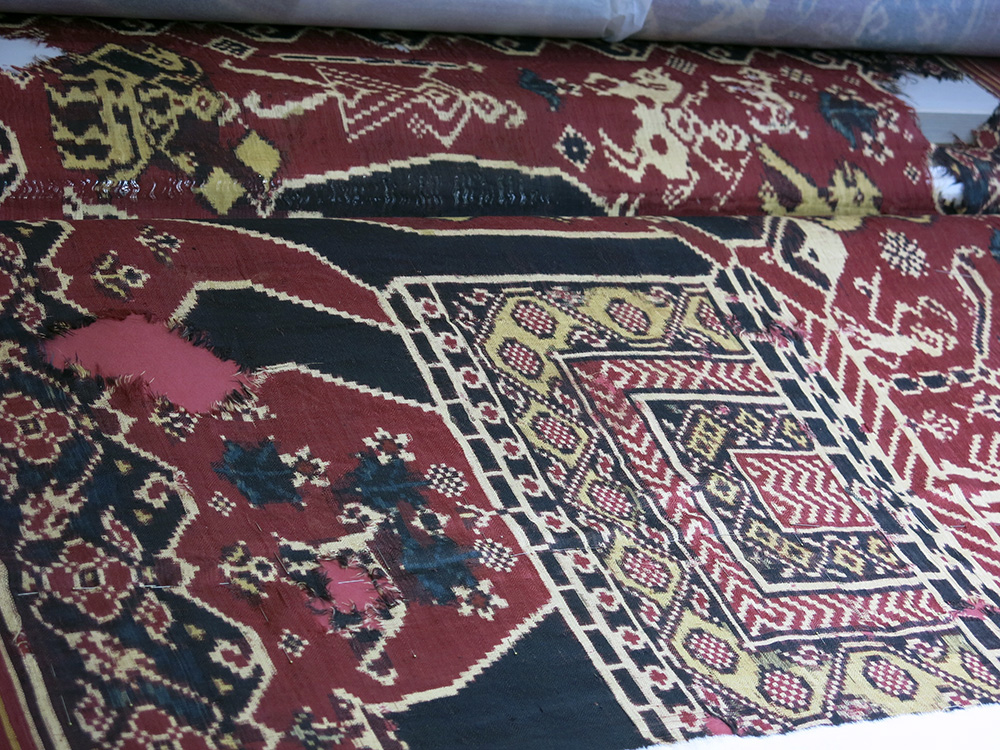 The completely restored textiles, and many others, can be seen at The Fabric of India Exhibition, which runs from 3rd October 2015 until 10th January 2016 at London’s Victoria and Albert Museum – supported by Good Earth: Sustainable Luxury.
The completely restored textiles, and many others, can be seen at The Fabric of India Exhibition, which runs from 3rd October 2015 until 10th January 2016 at London’s Victoria and Albert Museum – supported by Good Earth: Sustainable Luxury.
